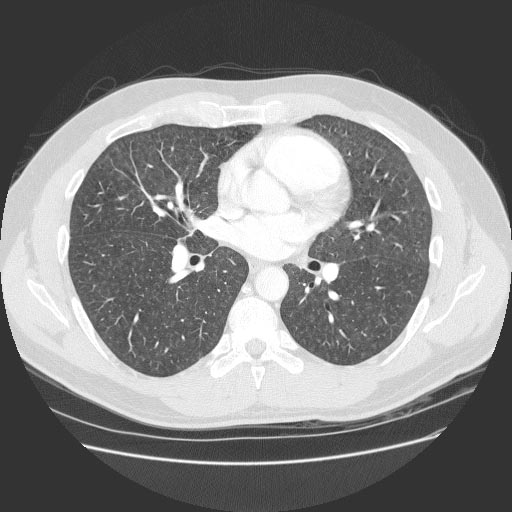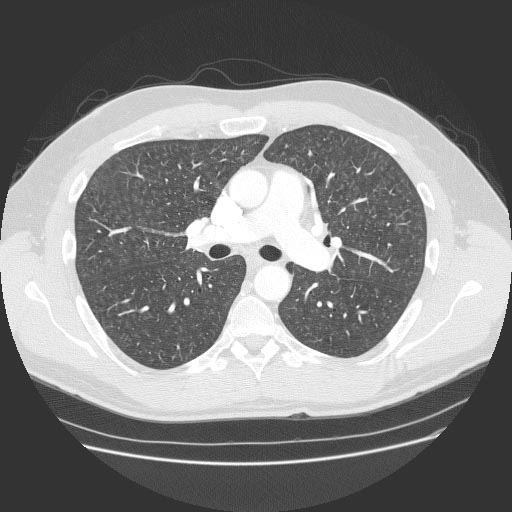Byssinosis CT
Editor-In-Chief: C. Michael Gibson, M.S., M.D. [1]
|
Byssinosis Microchapters |
|
Diagnosis |
|---|
|
Treatment |
|
Case Studies |
|
Byssinosis CT On the Web |
|
American Roentgen Ray Society Images of Byssinosis CT |
Overview
CT
Acute hypersensitivity pneumonitis
- Chest radiographs in affected patients may be normal; thin-section CT can be helpful in these patients for showing characteristic centrilobular ground glass or nodular opacities.
- When abnormal, chest radiographs typically show focal or diffuse heterogeneous or homogeneous opacities.
Subacute hypersensitivity pneumonitis
- Patients with subacute disease usually have a more indolent clinical presentation. Nodular opacities are a characteristic feature on chest radiographs and CT. Centrilobular ground-glass or nodular opacities on CT suggest the diagnosis.
- Head cheese sign
Chronic hypersensitivity pneumonitis
- Chronic disease typically manifests with upper lung zone fibrosis. Characteristic distribution and presence of centrilobular nodules on CT help distinguish chronic hypersensitivity pneumonitis from idiopathic pulmonary fibrosis.


